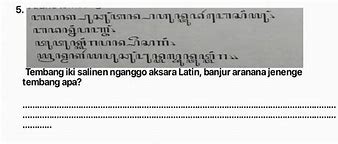
Fodhil, M., Miftahudin, M., Zuli Astutik, H., & Naim, A. (2021). Pemanfaatan Limbah Rumah Tangga Anorganik. Jumat Pertanian: Jurnal Pengabdian Masyarakat, 2(2), 96–100. Retrieved from https://ejournal.unwaha.ac.id/index.php/abdimasper/article/view/1750
This study aims to look at the form of the implementation of environmental education in the form of utilization of household waste (inorganic). nvironmental education is a process arbitrarily person to conduct environmental stewardship for sustainable survival. The increasing volume of waste requiring serious treatment of the waste management. Waste management does not use methods and techniques that are environmentally friendly waste management than would be a negative impact on health will also be very disruptive both residential environmental preservation, forest, rice fields, rivers and oceans. One of the forms of waste is household waste in the form of garbage anorgnik. This litter is very dangerous for health and the environment because it is made from inorganic sources of non-renewable natural and contains no chemicals, but its existence is only glimpsed one eye. Utilization of inorganic waste is one that can be done by the whole society to preserve the environment. This research is a descriptive study and a review of the literature. This study hopes to sustainable environmental education is expected to contribute knowledge to all levels of society on the importance of inorganic waste.
utilization of household waste, inorganic waste, implementation, environmental education
Azwar Azrul. 1986. Pengantar Ilmu kesehatan Lingkungan. Jakarta: Mutiara Sumber Widya.
Ismoyo IH. 1994. Kamus Istilah Lingkungan. Jakarta: PT. Bina Rena Pariwara.
Miles. Huberman. 1992. Analisis Data Kualitatif. Diterjemahkan oleh tjetjep rohendi. Jakarta: Universitas Indonesia.
Moleong. L. J. 2004. Metodologi penelitian kualitatif. Bandung: Remaja Rosdakarya.
Nitikesari, Putu Ening. 2005. Analisis Tingkat Partisipasi Masyarakat dalam Penanganan Sampah Secara Mandiri di Kota Denpasar. Tesis Magister Program Pascasarjana Universitas Udayana, Denpasar.
Sutopo, Heribetus. 1988. Pengantar Penelitian Kualitatif Dasar Teorotis dan Praktis. Surakarta: Pusat Penelitian UNS.
Sutoyo, Bagong. 2013. Fenomena gerakan mengolah sampah. Jakarta: Pusat Komunikasi publik kementrian pekerjaan umum.
Tim Penulis PS. 2008. Penanganan pengolahan sampah. Jakarta: Penebar Swadaya.
Undang-Undang No.23 Tahun.1997 tentang Pengelolaan Lingkungan Hidup.
Undang-Undang No. 18 Tahun 2008 tentang Pengelolaan Sampah.
https://www.google.co.id/search?q=definisi+limbah&hl=id#hl=id&q=definisi+sampah&s
tart=10. 6 Agustus 2013.
Household Waste and Environmental Impact
High SchoolScienceBiology
Household waste refers to the materials or substances that are discarded as a result of everyday domestic activities. The impact of such waste on the environment can be significant, especially when certain types of waste, like detergents, are not easily degradable and can contaminate soil and water sources. Understanding the composition and environmental effects of household waste is crucial for developing effective waste management strategies.























